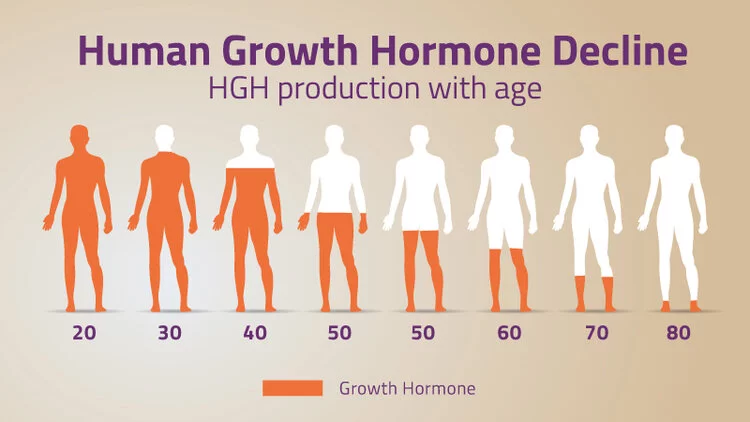Introduction
In this review, we dive into the world of Obsessive-Compulsive Disorder (OCD), a mental health challenge characterized by intrusive thoughts and repetitive behaviors that disrupt daily life. Transcranial Magnetic Stimulation (TMS) is a non-invasive procedure employing magnetic fields to stimulate the brain and is one of the most effective treatments for this condition. Exploring it as a treatment for OCD is vital, as it offers hope to those who haven’t found relief through traditional methods. This content outline aims to provide a simple and engaging overview of OCD and TMS, emphasizing TMS’s potential significance in the treatment of OCD, ultimately enhancing the quality of life for those affected.
Understanding Obsessive-Compulsive Disorder
OCD is a mental health condition characterized by persistent, distressing, and intrusive thoughts (obsessions) and repetitive behaviors or mental acts (compulsions). These obsessions and compulsions often consume a significant amount of time, causing distress and impairing daily functioning. The impact of OCD on individuals’ lives is profound, affecting their relationships, work, and overall quality of life. OCD sufferers frequently find themselves trapped in a cycle of anxiety and compulsive behaviors, making it essential to explore effective treatment options.
Conventional treatment for OCD primarily consists of psychotherapy, often in the form of Cognitive-Behavioral Therapy (CBT), and medication, such as selective serotonin reuptake inhibitors (SSRIs). While these approaches can be beneficial for many, some individuals do not respond adequately to them, highlighting the need for alternative treatments like TMS. It offers a promising route for those seeking relief from the damaging grip of OCD, potentially providing newfound hope and improved life quality.
Transcranial Magnetic Stimulation – Mechanisms and Principles
TMS is a non-invasive neurostimulation technique that uses magnetic fields to stimulate specific regions of the brain. TMS works by generating magnetic pulses that pass painlessly through the skull and into the brain. These pulses induce electrical currents in the neurons, influencing their activity. Importantly, TMS is safe and non-invasive, causing minimal discomfort or side effects.
In the realm of psychiatric disorders, TMS has gained recognition for its therapeutic potential. It has shown promise in treating conditions like depression, anxiety, and OCD. By precisely targeting brain regions associated with these disorders, TMS can modulate neural activity and potentially alleviate symptoms.
Regarding OCD treatment, TMS offers an exciting opportunity for exploration. OCD is characterized by aberrant neural circuitry and dysregulated neurotransmitters. TMS can be tailored to target these specific brain regions, potentially restoring normal neural functioning. While research is ongoing, early studies suggest that TMS may help reduce OCD symptoms, offering hope to those who have not responded adequately to conventional therapies.
Clinical Evidence and Research
Extensive research and clinical trials have explored the effectiveness and safety of TMS for OCD. These studies have yielded valuable insights into the potential of TMS as a therapeutic option.
Many of these investigations have reported promising results, demonstrating that it can effectively reduce OCD symptoms. Moreover, TMS is generally well-tolerated, with minimal side effects, making it a viable choice for those who seek alternatives to traditional treatments.
When applying TMS to OCD treatment, specific protocols and parameters are carefully considered. The choice of stimulation site, frequency, and intensity is tailored to target the brain regions implicated in OCD pathophysiology. This individualized approach enhances treatment precision and optimizes outcomes.
For individuals with treatment-resistant OCD, where conventional therapies have shown limited effectiveness, TMS offers a ray of hope. Its ability to directly influence neural circuits associated with OCD may break the cycle of intrusive thoughts and compulsive behaviors. It can serve as a valuable addition to the therapeutic arsenal, providing new avenues for managing this challenging condition.
TMS in Obsessive-Compulsive Disorder – Mechanisms of Action
TMS wields its therapeutic potential in OCD by intricately affecting the brain’s circuitry. When applied to targeted regions implicated in OCD, it induces subtle yet profound changes in neural activity. These changes lead to a modulation of the brain’s functioning, disrupting the recurrent loops of obsessive thoughts and compulsive behaviors that characterize OCD.
By modulating specific brain regions, TMS influences the intricate balance within these neural circuits. It adjusts the neural firing patterns, leading to alterations in the strength and connectivity of the affected circuits. This modulation disrupts the aberrant signaling associated with OCD, helping individuals regain control over their thoughts and actions.
The ultimate impact of TMS in OCD treatment is the attenuation of obsessive thoughts and compulsive behaviors. It gradually reduces the intensity and frequency of intrusive thoughts through finely tuned adjustments to the brain’s neural pathways. This, in turn, diminishes the urge to engage in compulsive rituals. As the neural circuits regain normalcy, individuals experience relief and significantly improve their quality of life.
TMS Treatment Process
The process of TMS as a treatment for OCD typically involves several key aspects. Patients undergo a series of TMS sessions, with each session lasting around 30 to 40 minutes. These sessions are often scheduled on a daily basis, typically five times a week, and can continue for several weeks.
Throughout the treatment journey, the progress of OCD patients is closely monitored. Treatment parameters, such as the intensity and location of TMS pulses, may be adjusted as needed to ensure the best possible therapeutic outcome. This individualized approach, coupled with regular monitoring, helps patients on their path to managing OCD symptoms and achieving a better quality of life.
Safety and Side Effects
The safety of TMS as a treatment for OCD is a major concern. While TMS is considered a safe and non-invasive procedure, it’s essential to be aware of potential side effects. Common side effects, if they occur, are typically mild and transient, including scalp discomfort or mild headache during or after a session. These side effects are closely monitored and managed by healthcare professionals to ensure patient well-being.Patient safety is a top priority throughout the TMS treatment process.
Proper evaluation of the patient’s medical history and condition is conducted before initiating treatment. Continuous monitoring during sessions ensures any adverse reactions are addressed promptly. In the rare event of significant side effects, treatment can be adjusted or discontinued as needed to prioritize patient safety and comfort. Overall, TMS in OCD treatment is recognized for its safety and effectiveness, with potential side effects carefully managed to provide patients with the best possible experience and outcome.
TMS and Co-occurring Conditions
In treating OCD, it’s essential to address co-occurring disorders that often accompany it. Many individuals with OCD also struggle with conditions like depression or anxiety. TMS holds promise as a treatment not only for OCD but also for these co-occurring disorders. This approach aligns with a holistic patient care model, recognizing that mental health is interconnected. By targeting both OCD and comorbid conditions with TMS, clinicians can provide a comprehensive solution that enhances the overall well-being of patients, improving their quality of life and mental health in a holistic and patient-centered manner.
Success Stories and Patient Testimonials
Hearing real-life accounts from individuals who have undergone Transcranial Magnetic Stimulation (TMS) treatment for OCD provides valuable insights into the effectiveness of this therapy. Personal experiences shed light on the transformational impact TMS can have on daily life and functioning.
Bony, a young professional, had battled severe OCD for years. Constant hand-washing rituals disrupted her life. After a TMS regimen, her compulsions reduced significantly. She regained control over her actions, improved her quality of life, and returned to work confidently.
Mike, a devoted father, struggled with OCD-related intrusive thoughts. TMS therapy helped alleviate his anxiety and reduce these distressing thoughts. He could enjoy more meaningful interactions with his family, leading to a happier and healthier home environment.
Combining TMS with Other Therapies
Combining psychotherapy with TMS is potent in managing OCD. Psychotherapy, particularly Cognitive-Behavioral Therapy (CBT), helps individuals modify thought patterns and behaviors. When paired with TMS, which addresses the neurological aspects of OCD, it forms a comprehensive treatment strategy. Additionally, exploring combination therapies involving TMS and medications, such as SSRIs, shows promise in challenging OCD cases. This holistic approach, considering both psychological and neurological facets, provides individuals with a well-rounded strategy to combat OCD and improve their quality of life.
Future Directions and Challenges
Continual research and advancements in TMS for OCD propel the field forward. Ethical considerations, including affordability and accessibility of TMS therapy, remain essential to ensure equitable treatment options. Additionally, the pursuit of personalized treatments, tailoring TMS protocols to individual needs, is a promising avenue. By addressing these factors, the scientific community endeavors to refine and expand the application of TMS in OCD treatment, striving for more effective, accessible, and ethical care for individuals affected by this challenging condition.
Conclusion
In summary, this review highlights the promising potential of TMS as a treatment for OCD. The evolving landscape of OCD therapy now includes TMS as a viable option, offering hope to those who have struggled with this condition. It underscores the importance of informed decision-making in seeking the most suitable treatment, emphasizing patient-centered care. As research advances, individuals with OCD and their healthcare providers are encouraged to explore TMS as a valuable addition to the spectrum of available treatments, fostering a brighter outlook for managing this challenging disorder.




